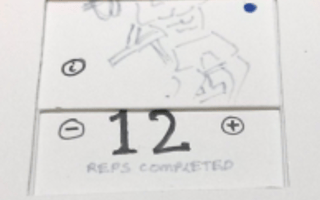Smartwatches aren’t just new; they’re different. The uniqueness of the smartwatch presents new challenges for those of us who design mobile experiences. Luckily, it also presents opportunities to learn from each other as we take on those challenges. I had one of those opportunities on a panel at South by Southwest Interactive 2016 to talk about lessons learned when creating applications for smartwatches.
1. Get real: use cases
The operative word here is “use.” Will the use case you’re thinking of really be useful? Does it absolutely need to be on a smartwatch to be useful? Could a smartphone do the job as well or better? This is the time to be honest with yourself about whether the smartwatch app you’re thinking about is worth developing.
Following these steps will help you evaluate your use case.
-
Plot features
-
Identify which make sense on the wrist
-
Determine the context surrounding those features
For example, the sooner you realize that it’s pretty hard to interact with an app on your wrist when you’re pushing a shopping cart, the better.
2. Keep it simple: prototypes
Once you’re confident that your app could indeed be useful, prototypes are invaluable for validating not only general usefulness, but also usability when someone is wearing a device on the go. Simple prototypes speed up the validation process.
Paper prototyping is about as simple as it gets. Cut out circles or squares, depending on the watch shape you’re working with initially, and tape them to the watch itself. Or make it even simpler by cutting sticky notes into strips and relevant shapes. One interesting hack we heard about involves putting a long strip of paper between two pencils and then using it to “scroll” through the app flow and simulate screens progressing.
Gallery apps that enable you to see multiple images in sequence can come in handy for smartwatch app prototyping. Create wireframes of your app flow, export them as JPEGs and import them into the gallery. Set them up in the sequence a user would click and then side swipe to move from one state to the next.
Interactive Prototyping tools are essential to enabling fully interactive experiences. They allow the user to get as close the real experience without building it. There are dozens of prototyping tools for mobile prototypes but only recently have those tools began supporting smartwatch interactions, such as Pixate.
3. Be specific: devices
This may sound like an obvious point, but it’s one worth emphasizing: when you’re designing a smartwatch experience, be sure your team is familiar with the target device and how it works. That means if you’re working on an Android Wear experience, you should provide people on the team with Android Wear devices.
Yes, buying a smartwatch for everyone can be a big expense. But it’s nothing compared to the cost of oversights and poor design decisions that are likely to result from a team designing for a device they haven’t actually used. If it helps, keep in mind that when you get to the user-testing phase, your design team’s smartwatches can do double-duty as test devices.
If your budget really can’t handle the cost of a dozen or so smartwatches, don’t give up quite yet. Consider renting the devices. For example, for about $45, you can rent an entry-level Apple Watch for a week from Lumoid (https://lumoid.com/products/wear).
4. Stay focused: edge cases
With smartwatches, edge cases tend to be the rule rather than the exception. For example, take spotty Wi-Fi in extreme environments like the gym. That may not be a big deal on a phone or tablet, but a smartwatch is much more likely to be used at the gym, making poor Wi-Fi connectivity a bigger problem. Similarly, screen brightness that dims when battery power is low isn’t a big deal on devices with relatively long battery life – but it definitely can be on smartwatches, many of which have been plagued with battery life issues. Also, sensors used with smartwatches may fail due to hardware glitches. That’s decidedly not a good thing on a device whose wearability makes it such a natural choice for sensor-driven apps.
These are just a few examples of extreme situations. To minimize the impact on your app, make it a point to identify the edge cases that could create problems, never underestimate their potential impact and stay focused on finding ways to address them.
5. Think small: screens
Ultra-small smartwatch screens present a variety of design challenges. You have less real estate and minimal screen elements to work with, and your ability to guide user interactions and navigation is limited. There are no explicit back buttons, no breadcrumbs to show the way and very little information on each screen to help users understand where to go next. And while early adopters may be more forgiving of a demanding experience than most, the next wave of users is not likely to show as much patience.
To keep screen-size limitations from getting the best of you, make each design decision an opportunity to create the fastest, simplest, most foolproof interaction at every turn. At the same time, remember that the small-screen experience you design needs to work equally well on square and circular screens assuming your building for Apple Watch and Android Wear. A circle-shaped experience in particular can be tricky, especially when it comes to presenting any content that’s relatively text-heavy. Be mindful of this going in so that it doesn’t trip you up later.
Creating experiences for smartwatches is going to present complications no one has faced until now. My colleagues and I learned valuable lessons from taking up the challenge, and I hope those lessons make your own path to smartwatch success a little bit smoother.
Image courtesy of: http://aaronbrako.com/prototyping






